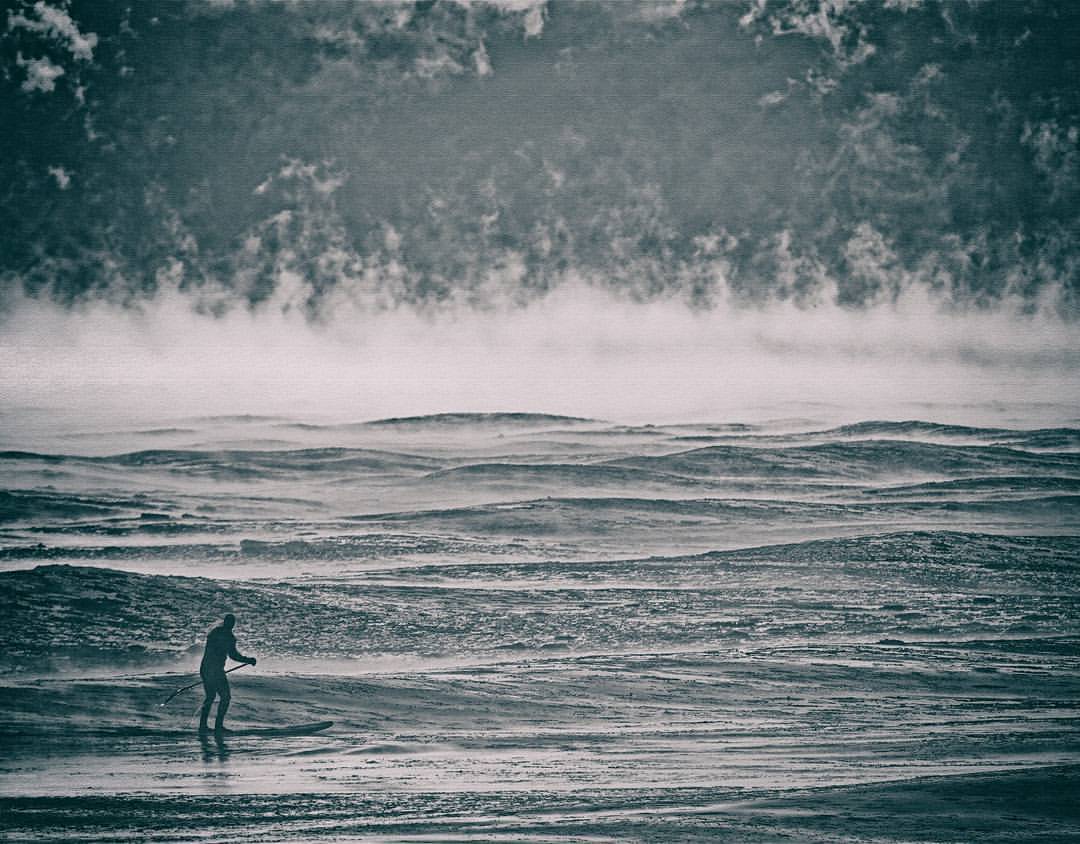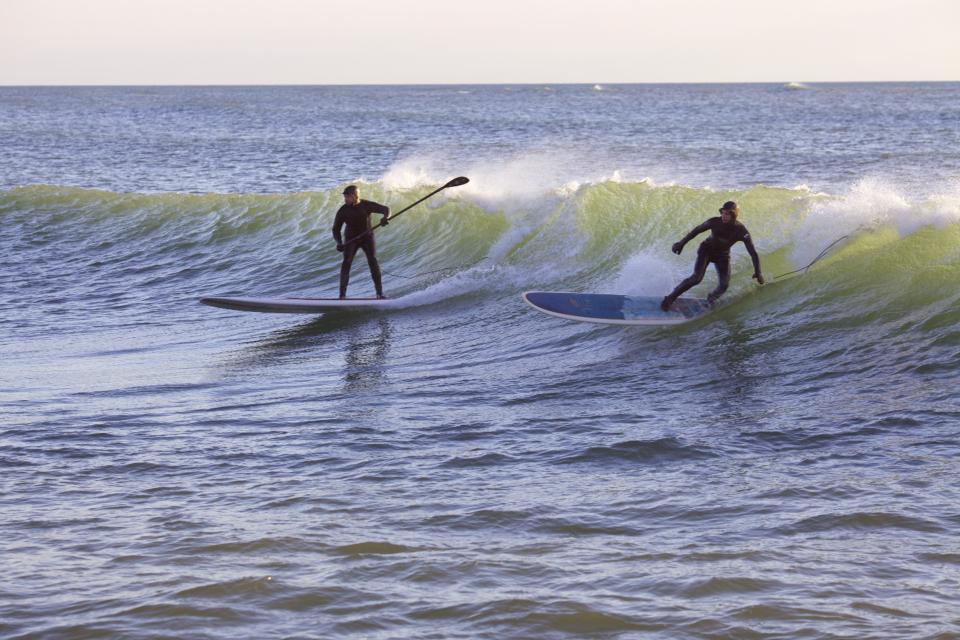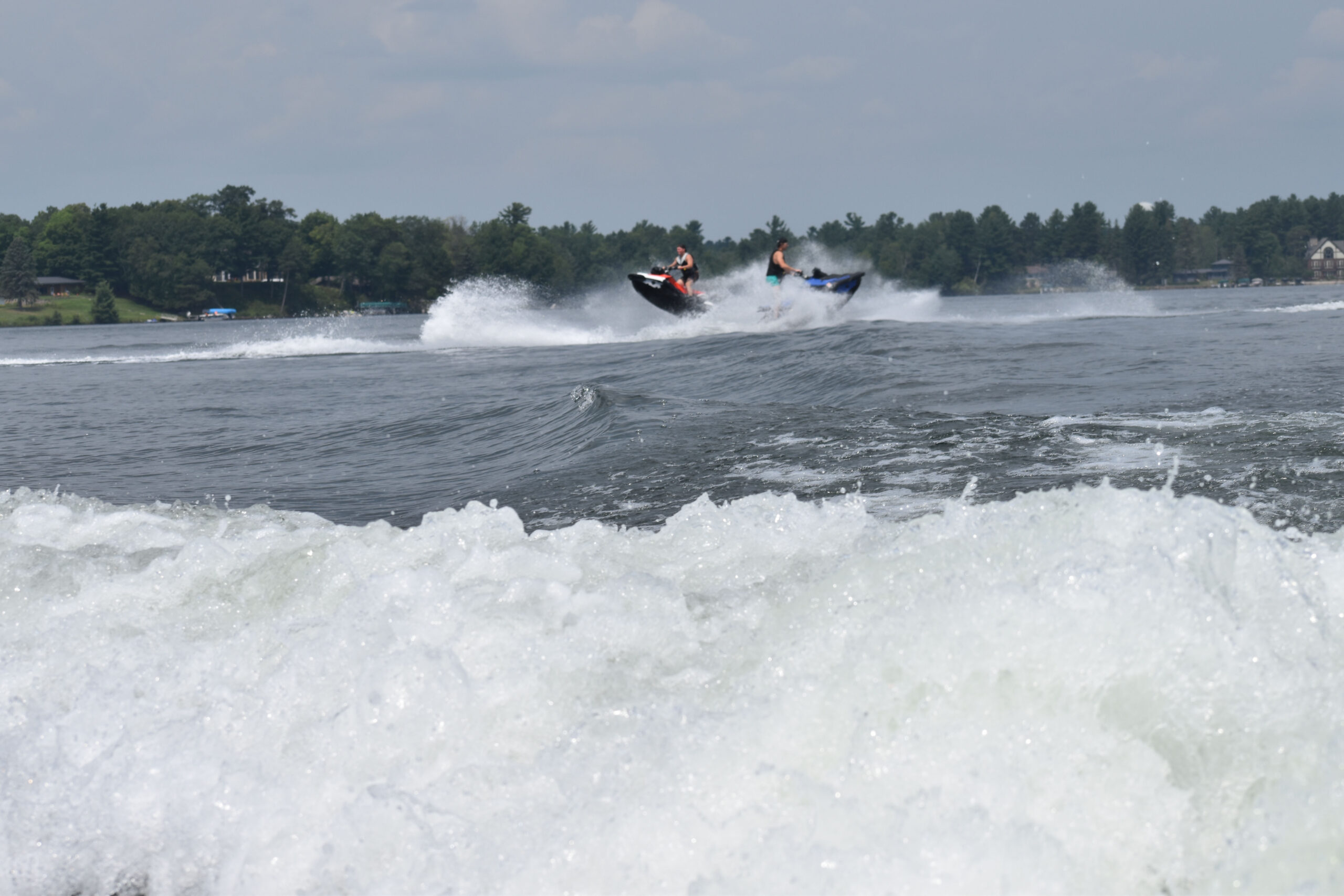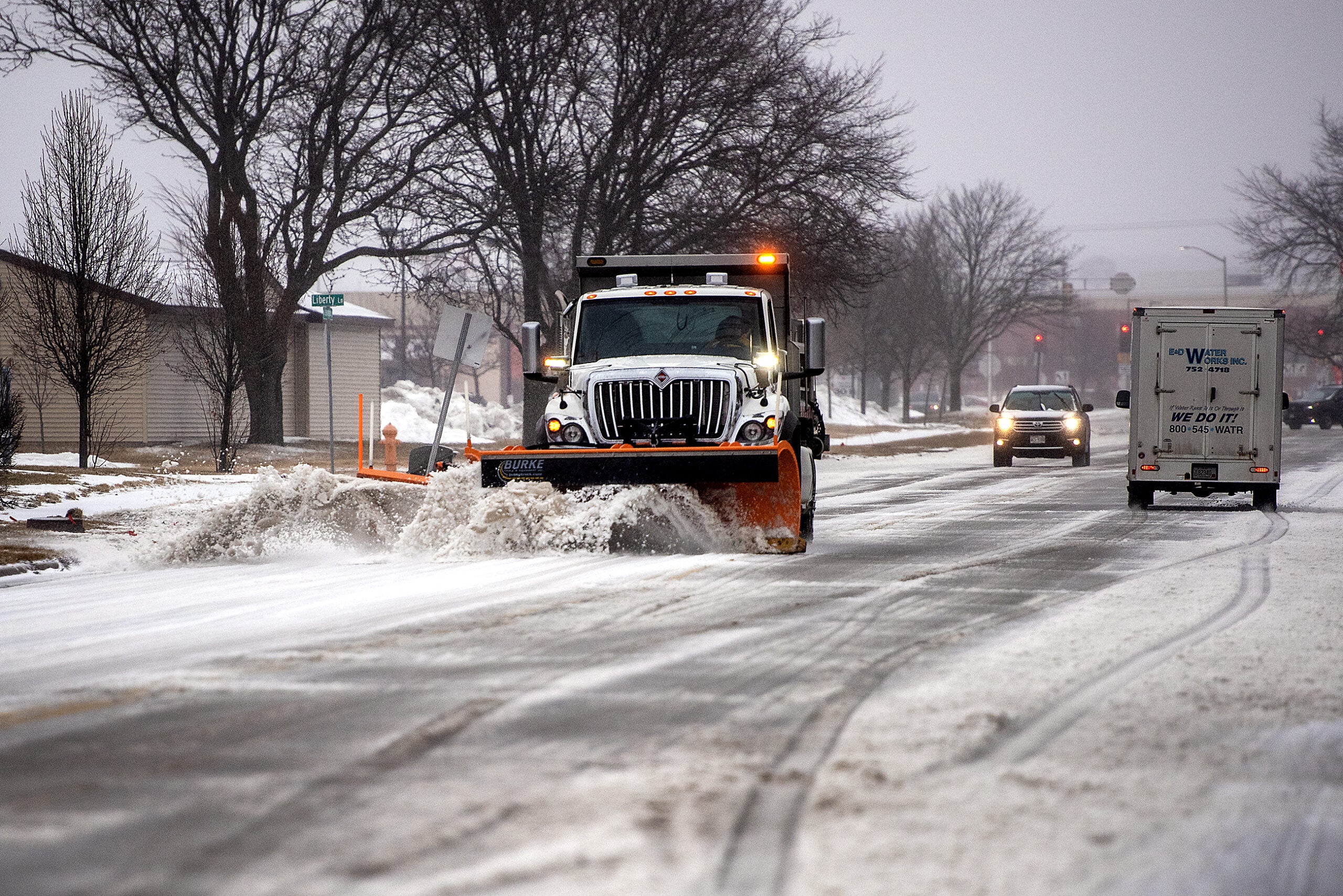When the winter waves of Lake Michigan are crashing onto Sheboygan’s beaches in 30- and 40-degree weather, the surfers will still be there.
While the so-called “Malibu of the Midwest” is less popular than famed surfing spots in California and Hawaii, the owner of a Sheboygan surf shop says his city — and plenty of others on the Great Lakes — offers a lot to the surfing community.
“On a big day, you can open up the windows, (and) you can hear the waves roaring,” said Mike Miller, who runs EOS Surf Shop and lives a few blocks from the lake. “It doesn’t have to be a tropical setting to go out and surf. It’s right in our backyard.”
News with a little more humanity
WPR’s “Wisconsin Today” newsletter keeps you connected to the state you love without feeling overwhelmed. No paywall. No agenda. No corporate filter.
Miller recently appeared on Wisconsin Public Radio’s “The Morning Show” to discuss surfing in Sheboygan, also known as the freshwater surf capital of the world. Because the city sits centrally on the lake’s western coast, winds arrive from several different directions and make good waves, the Sheboygan Press reported last year. Cooler and denser air from September through March also creates bigger and better waves.

Miller started surfing about 18 years ago when he was just about 30. He said the fall is Sheyboygan’s best surfing season. Winds tend to produce bigger waves while the water is still warmer. But he said wearing modern-day wetsuits, boots and gloves makes it possible to surf in the winter months.
“When things start dropping below 30 (degrees), that’s when it gets a little more interesting,” he said.
Miller said he primarily looks for opportunities where wind creates waves and then the gusts die down. In these windows, surfers can ride bigger waves without being affected by high winds. He said finding a good, clean wave is about half the battle.
Sheboygan surfers must be amateur forecasters, he said. They track weather patterns and low-pressure systems. In the ocean, the groundswell that affects waves is easier to predict further out.
Another difference between surfing lakes and oceans is the buoyancy in bodies of freshwater and saltwater. Miller said the more buoyant saltwater helps create slightly stronger waves.
The frequency of waves is also different on lakes. Miller estimated the ocean might offer 10 to 15 seconds between wave sets. On Lake Michigan, the rate might be 3 to 5 seconds.
EOS Surf Shop opened nearly 25 years ago. On its website, the shop touts being the first surf and paddleboard shop of its kind in the state. But the surfing community has long existed in Sheboygan, dating back to at least the 1960s. Some surfers stay year-round. Others come and go. Miller said surfing helps drive tourism to the region.
“We accept anybody coming in,” he said.
Wisconsin Public Radio, © Copyright 2026, Board of Regents of the University of Wisconsin System and Wisconsin Educational Communications Board.





